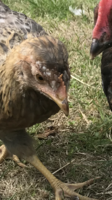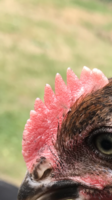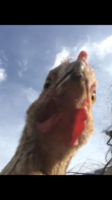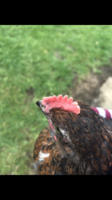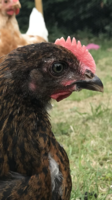Chickem707
Songster
- Jul 11, 2018
- 537
- 498
- 202
1.Most of my chickens have a rather scaly comb
2. One of my cockerels wattles is smaller than the other
3. Another cockerel has one normal wattle and one shriveled up one, about half the size
4. The same cockerel has little white spots on the points of his comb
5. One of my cream legbar pullets has a comb that keeps getting more ‘curly’
I don’t think any of this is normal, as imput is appreciated.
2. One of my cockerels wattles is smaller than the other
3. Another cockerel has one normal wattle and one shriveled up one, about half the size
4. The same cockerel has little white spots on the points of his comb
5. One of my cream legbar pullets has a comb that keeps getting more ‘curly’
I don’t think any of this is normal, as imput is appreciated.

